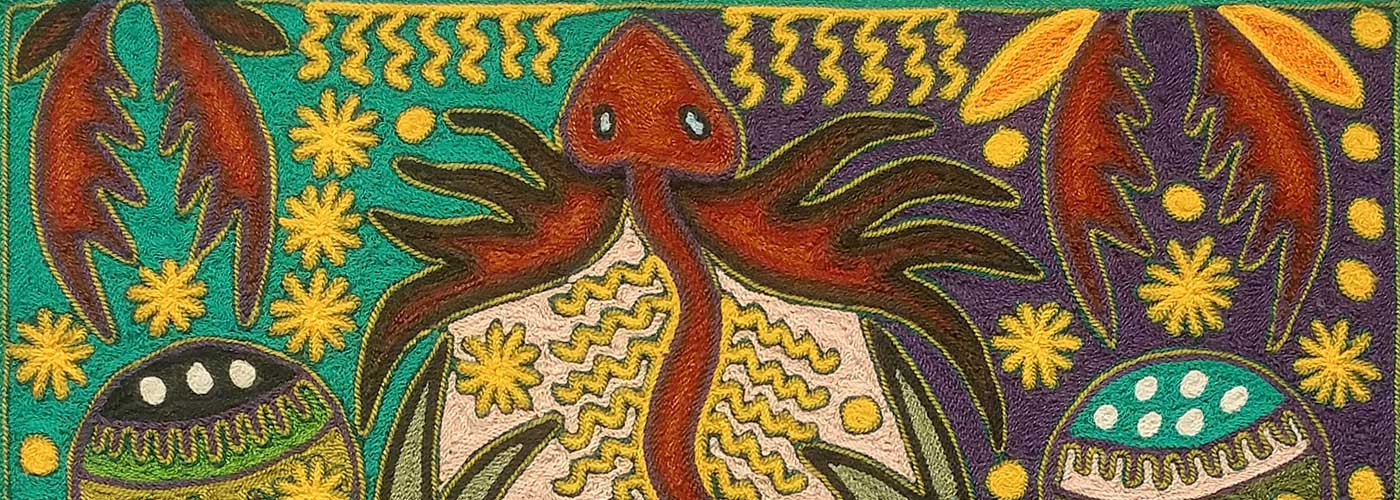This article is meant as a *very* basic introduction to the Huichol bead and yarn art found in and around the state of Jalisco, Mexico. We actually didn’t spend much time learning about this, so I definitely advise checking out other resources online, such as the Wikipedia page, here.
That said, during any travels to Pureto Vallarta and its surrounding areas, you’ll no-doubt see quite a lot of this style of traditional artwork, which strikes me as both simple and rather complex at the same time. The simplicity comes from the technique, which numerous shop owners described to me in just a few minutes. As far as I understand, it goes like this:
- The artist selects something on which to apply the beads, yarn, or other material (we also saw people using small colored grass-like fibers). This could nearly anything — from flat surfaces to statues of things ranging in size from small souvenir-sized peices to much larger works. (We even saw an entire Volkswagon Beetle done up this way!)
- Then, the working surface is covered in what I was told was beeswax (although, in that article linked to above, it mentions resins, so perhaps this aspect varies a bit).
- Then the materials are applied in various patterns. I get the impression that these patterns could consist of (1) traditional symbols, motifs, and paterns, (2) modern / contemporary versions of the same, and/or entirely new concepts, and/or (3) simple colored designs purely for aesthetic appeal.
- The specific technique most likely relates to the medium. Beads, for example, seem to be kept on long metal wires, and applied directly from the wire to the piece — as opposed to picking up single beads from, say, a bowl, using a tweezers, and then aplying them one at a time. This wire technique makes the beadwork at least somewhat faster, although it’s still meticulous stuff! (I didn’t see anyone making the yarn variety shown above in the photo, so I’m unsire of the technique.)
In general, the color schemes are bright, vivid colors, although in the more gallery-type shops, we saw a wider palette.
Someone in a shop gave me a flyer explaining many of the symbols found in this type of art. I’ll show some of these here:

Clearly, there are many, many more symbols used, but that’s at least an introductory assemblage of some common ones.
We’re most likely going to spend a good deal of time in Puerto Vallarta in the years to come, so I’ll revisit this topic (or my wife will) in the future if / when I get any hands-on experience trying it. At least for me, my reaction wasn’t so much to want to buy anything. I did enjoy looking at the hundreds or even thousands of pieces for sale around town. But, my first reaction was to want to try it myself.
Sadly, there weren’t any workshops offered in this technique, even though this could no-doubt be a popular pastime for visitors in the region. But, I suppose maybe that’s because, if they taught everyone how to do this, then fewer people might purchase the art itself. So, perhaps that’s why the technique is somewhat guarded (as you can probably tell from my writing here where I’m kind of reverse-engineering the art form).
